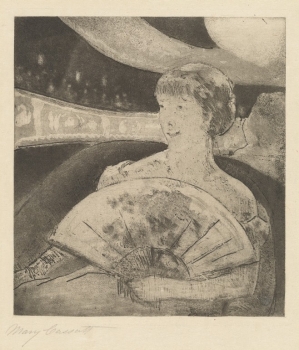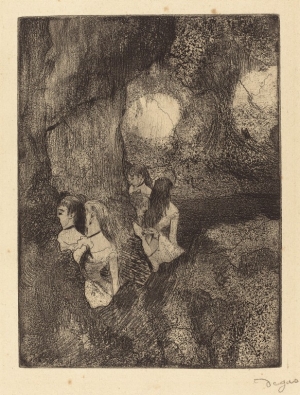Energized by the critical and financial success of the 1879 exhibition, Degas proposed a journal of original prints entitled Le Jour et la nuit. It was to be a celebration of black-and-white imagery and, as its name suggests, the contrasting qualities of light and shadow. Degas recruited several of his fellow impressionists as contributors, including Cassatt, who worked diligently throughout the autumn of 1879 and the early months of 1880.
Although the proposed journal never materialized, collaborating on it was a transformative moment for both Degas and Cassatt. Degas, who had some prior experience as a printmaker, served as instructor and mentor to Cassatt and the other contributors. He introduced them to the relatively unknown technique of softground etching, which involves the transfer of a design to a copperplate coated in an acid-resistant ground of soft wax and produces the effect of a chalk or pencil drawing in the print.

